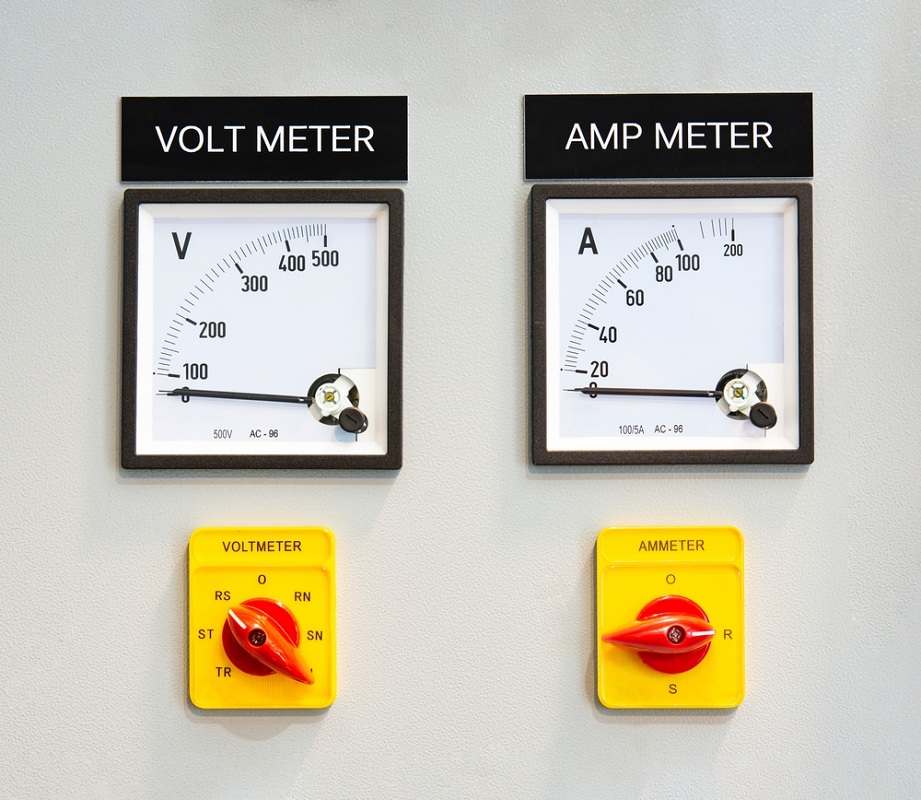Most of us understand what solar power is and how it generally works.
Solar panels convert sunlight into electricity, which is then transmitted to a battery or directly to a load (an appliance, machine etc.).
If you are planning to install a solar system or buy a solar generator, you must master the basics of electricity and power generation. This means fully understanding what volts, amps, watts, and watt-hours are and how they relate to meeting your power generation needs.
Understanding these basics will help you set up the right system to meet your power needs.
In this beginner guide, we discuss these solar power basics.
This is a non-technical guide, so you don't need to have a physics or engineering background to follow along.
But do NOT skip this article if you have any doubts.
What Is Solar Power?

Solar power is a type of renewable energy that we harness from the sun.
The most common type of solar power technology most of us are familiar with is photovoltaic, which uses sunlight. Solar panels rely on the photovoltaic effect to produce electricity.
But there is a second type of solar power - concentrating solar-thermal power or CSP. CSP also harnesses sunlight, but converts it into heat instead of electricity.
This guide focuses on photovoltaic solar power, the kind that relies on solar panels to run appliances, charge devices, and power our homes using the sun.
How Does A Solar Panel Work?
A solar panel consists of multiple smaller components, called solar cells, that do the actual work of converting photons into electrical power.
In consumer solar panels, solar cells are made from silicon.
Solar cells generate electricity when they absorb photons (these are the energy particles that make up sunlight). You can read a more technical breakdown here.
The number and efficiency of solar cells on a solar panel determines the total output of the solar panels.
Multiple solar panels can be connected to form an array that produces more power.
Voltage
Voltage is the amount of electric potential between two objects such as the opposite ends of an electrical circuit.
A simpler way to understand voltage is to imagine it as the pressure that pushes electrons (or charge) to flow from a power source to the load, thus creating current and allowing us to power electronics.
(It actually doesn’t work that way, but this is a great way to think about it for the purposes of designing or selecting a solar power system.)
Think of a tank full of water.
The pressure of water in the tank is akin to voltage. If you connect a hose at the bottom of the tank, the pressure pushes water out through the hose, the same way voltage forces charge to move through wires.
The main purpose of understanding voltage in solar power is to ensure compatibility between various components.
If you have a 12V battery, then you can only charge it with a 12V solar panel. You’ll also need a 12V inverter and a minimum 12V charge controller.
If you want a 24V setup, then everything needs to be 24V across the wiring.
Further below, we’ll talk more about voltage specifically as it applies to solar panels, solar batteries and other solar components.
Current (Amps)
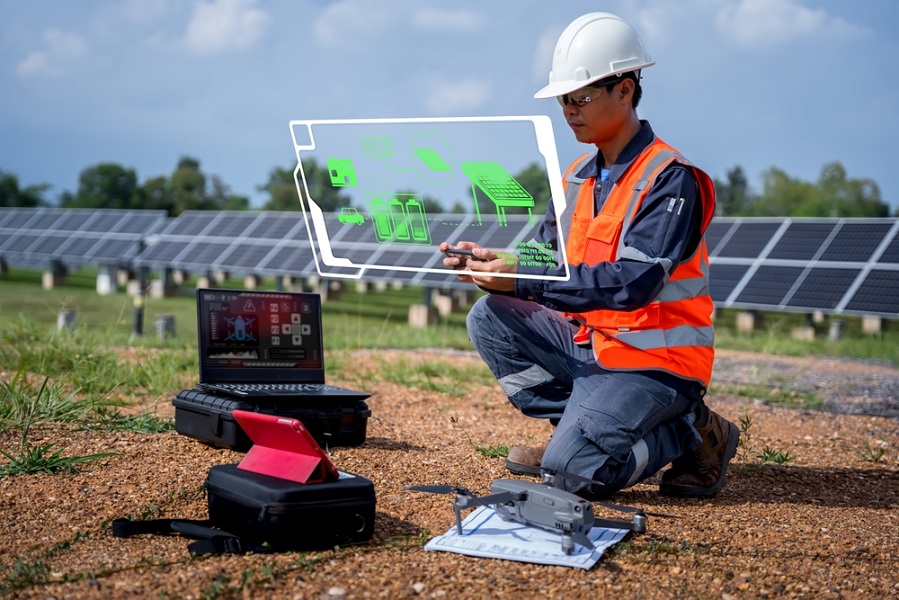
Continuing with our water tank analogy, current is the volume of water that flows through the hose for a given amount of time. The flow rate, in other words.
To calculate the flow rate of a water hose, you measure the volume of water flowing through it during a period of time.
In an electrical circuit, we calculate current by measuring the amount of charge flowing through it over a period of time.
We measure current using Amperes (Amps). So if you see the term amperage, it refers to the current rating on that system.
Knowing the amount of current that a solar panel produces is very important in setting up your system.
It determines the wire gauge that you use (higher current requires a thicker/lower gauge wire) and the amp rating of the solar charge controller you install.
For instance, the ALLPOWERS 200W Portable Solar Panel produces 11 amps. You would pair it with a 20A charge controller like this one from Renogy.
As for wire size, consult an AWG chart that tells you how thick of a wire you need for a certain current and circuit length.
Generally, the more the current in your system, the thicker the wire you need - especially if the solar panels are a long distance from the solar charge controller.
Using the right wiring gauge prevents overheating and energy losses.
Watts
Volts and amperes combine to create electrical power, which we call watts.
Watts are easy to understand because they are simply a product of volts and amperes.
One watt is the work done when one ampere of current flows through one volt of electric potential. The formula for calculating watts is W = V x A
This formula is also written as W = I x V where I is the current measured in amperes.
For example, the BLUETTI PV200 solar panel has a max voltage of 20.5V and a max current of 9.7A.
9.7A x 20.5V = 198.85W. This is about the same as the 200W rated output of the solar panel.
Knowing the watts of a solar panel lets you determine how much power it produces and, thus, how quickly it’ll fill your battery. It also helps you calculate how many solar panels you need to achieve a certain output.
Appliances also have a wattage rating, which is the amount of energy they consume in an hour. For example, a refrigerator might pull 250 watts when running.
You use the combined wattage of your appliances to figure out how much power output (Watts) and battery capacity (Watt-hours) you need. We’ll discuss what Watt-hours means shortly.
Components Of Solar Power Systems & Solar Generators
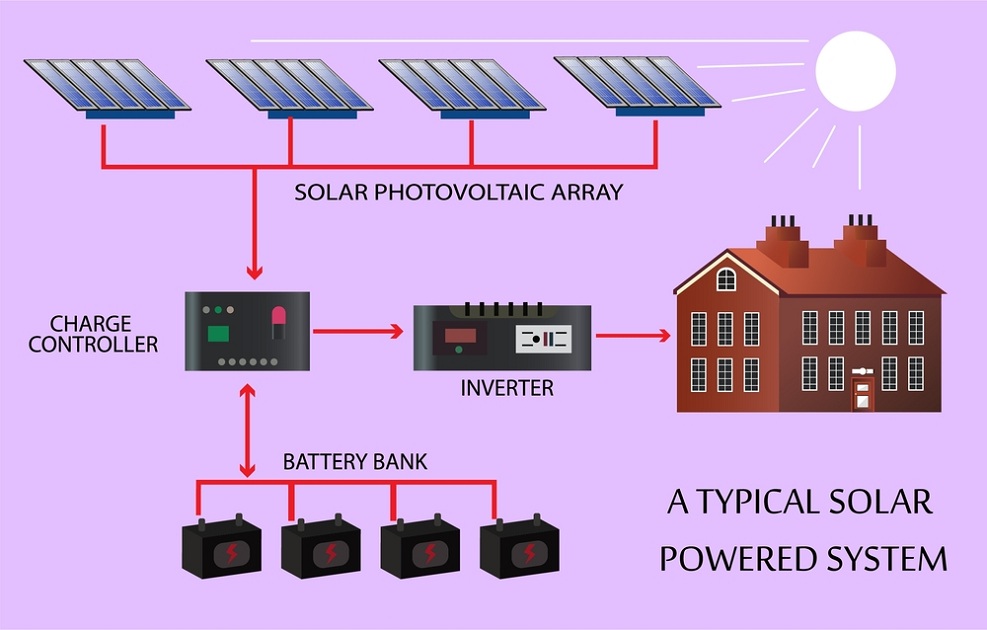
We’ve discussed volts, amps and watts as they apply generally to solar power and electricity.
Now I want to get more specific about these terms and how they apply to individual components of a solar system or solar generator.
For instance, voltage is not just voltage in a solar panel. There are different kinds of voltages as well as currents (e.g. open circuit voltage, max power voltage, short circuit current etc.).
When it comes to batteries, we talk about watt hours and amp hours instead of just watts and amps.
The major components we talk about below are:
Solar Panel Specifications: Open Circuit Voltage, Max Power Current and More

Solar Panel Voltage
Most of the consumer solar panels you’ll find on Amazon and other stores are 12V solar panels. You can also get 24V solar panels for larger systems.
12V or 24V is actually not the true voltage of the solar panel. It is the nominal voltage that is given for the purpose of designating the solar panel.
Basically, it’s a convenient number to make it easier to identify the type of solar panel. If you have a 12V battery, you know you need a 12V solar panel.
The actual voltage of a solar panel is higher than the one indicated. There are two types of voltages.
The voltage of the solar panel when it’s not connected to any loads like a battery. It’s the highest voltage measurement of a solar panel. The solar panel briefly produces Voc when the sun first comes up in the morning.
Use Voc when calculating how many solar panels you can connect in series before you hit the voltage input limit of the solar charge controller (Remember that series connection adds up voltages).
Max power voltage or voltage at maximum power is the voltage at which power output from the solar panel is greatest.
This is the sweet point at which the solar panel is most efficient. It is higher than the nominal voltage.
For example, this flexible 12V Renogy 100W solar panel has a Vmp or operating voltage of 18.9V.
An MPPT charge controller tracks the Vmp so that it can draw the maximum amount of power from the solar panel. This is why these charge controllers charge batteries faster.
In reality, a solar panel doesn't always produce peak voltage. Temperature is the biggest determiner of how much voltage solar panels produce. The hotter it gets, the lower the voltage.
Solar Panel Current
Because solar panels are identified chiefly by their voltage, not current, there’s no need for a nominal current specification.
Solar panels typically list two types of current measurements.
This is the number of amps measured on a solar panel without any load and when the positive and negative leads of a solar panel are connected.
Short circuit current is the highest amount of current a solar panel can produce.
Use the Isc (plus 20%) to stay under the amp rating of the solar charge controller. If you plan to wire solar panels in parallel (which adds up amps), calculate the combined Isc amps of the solar panels.
Max power current or current at maximum power is the peak amps the solar panel produces at max power output.
This is the current output you want to see from your solar panels most of the time. Use this figure, along with max power voltage, to calculate the peak output (in watts) you can expect from a solar panel.
Similar to voltage, a solar panel doesn't always output peak current.
Irradiance or amount of sunlight hitting the solar panel affects current. Shading causes a drop in current.
Tip: In an area where there’s likely to be shading, connect solar panels in parallel. This maintains high amps output even when one solar panel is in shade.
If you connect them in series, total current will drop to that of the shaded solar panel with the lowest amps. This reduces total power output.
Solar Panel Wattage
Solar panels also specify the peak power you can expect them to produce in ideal sunlight conditions.
Peak power is calculated by multiplying Imp by Vmp. But because a solar panel doesn't always hit max current and max voltage, you shouldn’t expect peak power output in real life.
That means that a 100W solar panel doesn't always produce 100 watts of power.
On average, solar panels produce 70% of the peak wattage. So a 100 watt solar panel will produce about 70W of power in ideal conditions.
When you calculate how long your solar panel is going to take to fill up a solar battery, use this real life figure (70% of peak power) to get a more accurate estimate.
Charge Controller Specifications: Max Voltage & Amp Rating
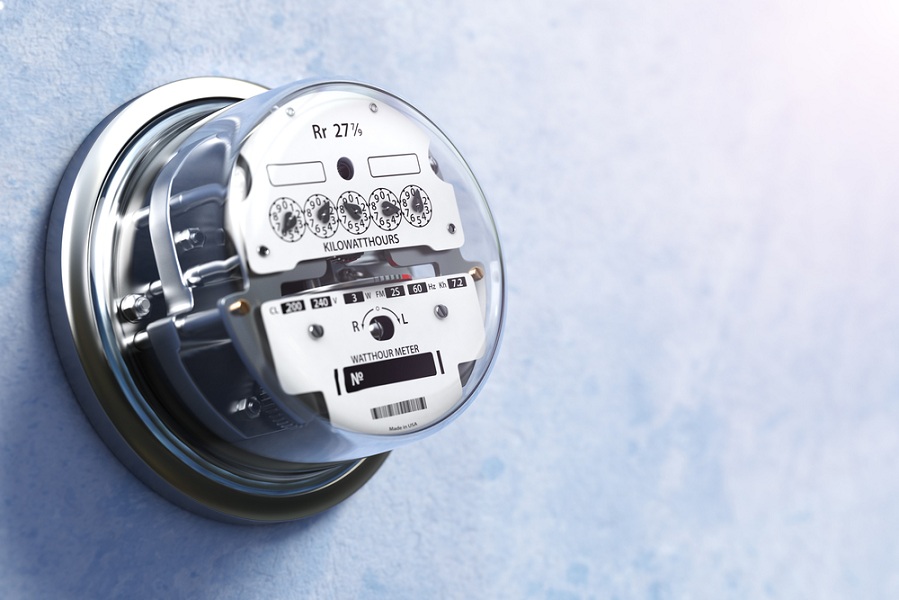
The charge controller is one of the most important components of a solar system. Even portable solar generators have one built-in.
A charge controller adjusts the current and volts coming from the solar panel and delivers safe power to the battery.
It ensures safe and efficient charging.
When it comes to charge controllers, there are two specifications: max voltage and amp rating.
Like solar panels, charge controllers have a nominal voltage rating like 12V and 24V. But the actual max voltage is usually higher.
The nominal voltage is just to help you pair a 12V charge controller with a 12V solar panel.
As we mentioned, use the open circuit voltage (Voc) of your solar panel(s) to make sure you are within the max voltage of the solar charge controller. This is especially important if you plan to wire the solar panels in series.
Tip: Many solar charge controllers today like this HUINE 20A PWM controller are labeled as suitable for both 12V and 24V systems. You should still check the max voltage input specified. In the case of the HUINE controller, it is 50V.
A solar charge controller’s amp rating is also very important.
It tells you the max current it can handle. To calculate the current a charge controller has to be able to manage, use the total power output (watts) from the solar panels and the voltage of the battery.
Say you have a 12V battery and the total peak power from your solar panels is 400 watts. Using the W = I.V formula, you can calculate amps by changing the formula to I = W/V.
In this case, total amps will be 400/12 which is 33.3 amps. With a safety margin added, a 40A charge controller is ideal.
Solar Battery Specifications: Watt Hours, Amp Hours & Voltage
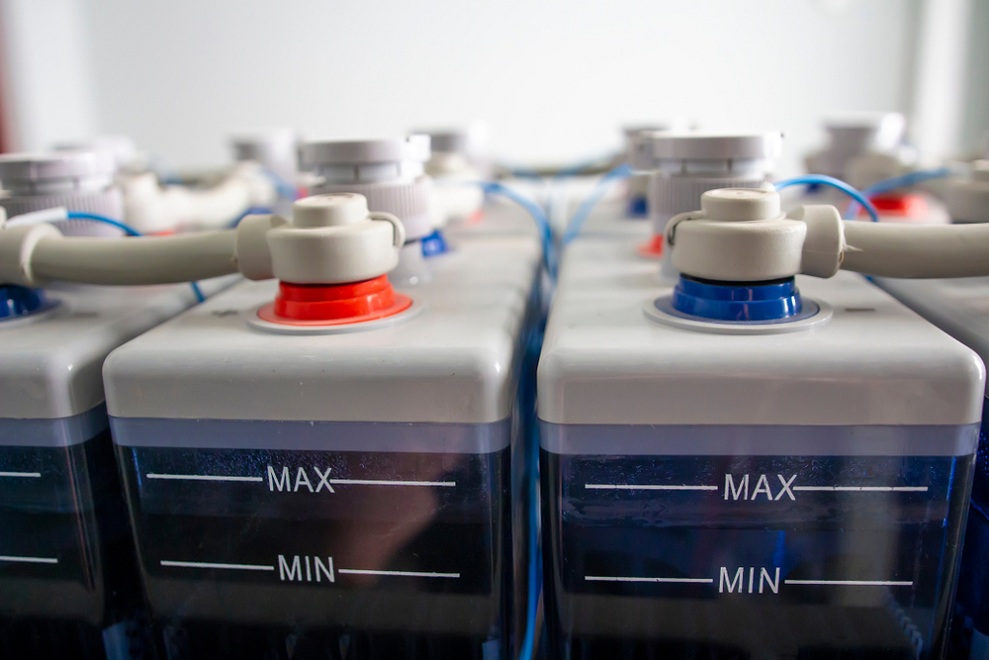
The biggest concern when it comes to the battery is its charge capacity. How much power can it store and supply?
But before you get to capacity, make sure you have the right battery voltage.
12V batteries are the most common. They are used along with 12V solar panels, 12V charge controllers and 12V inverters.
Again, 12V is the nominal voltage. Actual resting voltage of a healthy 12V battery is 12.6-12.8V. In fact, if you get a reading of 12V or less from your battery, it’s either deeply discharged or it’s dead.
There are also 24V batteries for 24V solar systems. In most cases, however, homeowners series-connect two 12V batteries to create a 24V battery bank.
Battery Amp-hours & Watt-hours
Battery capacity is typically given in amp-hours or Ah. This is the number of amps (amount of current) the battery can deliver for an hour.
The Ampere Time 12V 200Ah lithium iron battery can deliver 200 amps at 12V for an hour. If you only draw 50 amps, it could go for 4 hours.
That said, amp-hours is not the best way to measure how well suited the capacity of a battery is to your needs. It’s good for comparing batteries - a 200Ah battery has twice the capacity of a 100Ah battery.
But for checking whether a battery is adequate for your needs, watt-hours (Wh) is the best measure.
A watt-hour is the amount of power a load (appliance, device, bulb etc.) consumes over one hour.
A battery rated at 1,000Wh means it can support a consumption of 1,000 watts for one hour. If an appliance only uses 500W, the battery will last two hours (theoretically).
Using Wh is intuitive because most electronics have a watt rating. So it’s easy to figure out how many watts you consume in a day and then use that to determine how much solar output and battery capacity you need.
Say you want to power a fridge that uses 100W on average. On paper, our 1,000Wh battery can power the fridge for 10 hours (1,000Wh/100W).
In reality, it’ll power it for less time.
That’s because batteries don't completely discharge. Different types of batteries have a varying depth of discharge (DoD). It is about 50% in lead acid batteries and 80% in lithium batteries.
A 1,000Wh lithium battery has a usable capacity of 800Wh. Use this reduced capacity to determine how much battery storage you need.
In the case of the 100W fridge, the average runtime of the 1,000Wh battery will be 8 hours.
How to Convert Amp-hours to Watt-hours
If the battery only has amp-hours specified, you can calculate watt hours from the given figure. Multiple amp-hours by the battery’s voltage.
For example, a 60Ah 12V battery has an estimated capacity of 60 x 12 = 720Wh.
Keep in mind that the actual capacity will be a bit higher since 12V is just the nominal battery voltage. Actual voltage is higher.
Inverter Specifications: Voltage & Wattage

If you need to use AC power from your battery or solar panels, you’ll need an inverter. It converts DC power from the battery or solar panels to usable 110/120V AC power that you can use with household electronics.
The first step is to select an inverter that is compatible with other components in the solar power system.
If you have a 12V system, get a 12V inverter. If you have 24V solar panels and battery bank, use a 24V inverter.
Next, check the power output of the inverter. This will let you know the number and size of electronics you can power with the solar system or solar generator.
There are two kinds of power output ratings.
The Renogy 2000W 12V Pure Sine Wave Inverter has a continuous power output of 2,000W and a peak power rating of 4,000W.
You have to be careful that you don't draw more than 2,000W of AC power at the same time.
You can wire similar inverters together to increase max power output or get a higher rated inverter. For whole house solar power systems, there are inverters that can produce 6,000W or more to support all electronics such as the SUNGOLDPOWER 12000W 48V inverter.
With a peak output of 36,000W, this inverter can easily supply the startup power for big electronics like central AC.
What Is Wire AWG Rating?
The final component of solar power systems we’ll talk about is the wiring.
The most important factor when choosing the right wiring for your solar system is the size of the wires. Thicker wires are necessary if your system produces a lot of current.
Wires are sized by gauge. In the United States, we use the American Wire Gauge or AWG. It runs from 0000 AWG to 40 AWG.
The lower the gauge, the thicker the wire.
The easiest way to select the right AWG wire size is using an AWG chart or AWG calculator. It’ll give you the best wire size for a given number of amps and wire length.
Tip: Thick wires are expensive. Increasing voltage and reducing current can make a solar system cheaper to wire. A 24V home solar system will have cheaper wiring costs than a 12V system because it doesn't need thick expensive cables.
Frequently Asked Questions About Solar Power
How do I calculate amps on a solar panel?
Because watts is equal to amps x volts, you can calculate amps by dividing watts by volts.
If you have a 100W solar panel with a maximum power voltage of 18.6V, the solar panel’s max amps will be 100/18.6, which is 5.3 amps.
In real life, however, the amps produced by the solar panel will be slightly lower.
What is more important, watts or amps?
Both are important. Amps determine how many watts a solar panel produces.
That said, when it comes to sizing solar panels, watts is a more useful measure. That’s because it tells you how much power the solar panel produces and how quickly it can charge a battery.
How many amps does a 200W 12V solar panel produce?
If you only have the watts and voltage, you can calculate amps by dividing the watts by the volts. However, don’t use the 12V figure.
That’s because it’s the nominal or named voltage. It’s not the real voltage of the solar panel.
You want the maximum power voltage or Vmp, which should be listed somewhere in the specs.
If we assume the Vmp for the 200W solar panel is 20.5V, we can calculate amps this way: 200W/20.5 = 9.7A.
The solar panel produces 9.7 amps at maximum power output.
Does more amps mean more power?
Yes, increasing amps or current increases the power output (watts). However, it also increases the required wire size to prevent overheating.
With large solar systems, technicians typically try to reduce current as much as possible by increasing voltage.
Because you’ve added voltage, power output remains the same.
What size charge controller do I need?
To determine the size of the charge controller, divide the total watts your solar array or panel produces by the battery voltage.
This will give you the amps the charge controller will need to be able to handle.
Say your solar panels produce a max output of 300W and you have a 12V solar battery. Dividing 300 by 12 gives you 25 amps.
Always pick a higher rated charger controller. In this case, a 30A controller is ideal.
12V vs. 24V vs. 48V solar system, which is better?
The best choice among these three depends on the size of the system.
12V is perfect for small solar systems like in RVs and trailers, 24V for medium size ones like a small home or cabin, and 48V is ideal for large home systems.
The higher your power needs, the higher the voltage you should use. Using a higher voltage system increases efficiency, reduces how much you spend on the charge controller, and allows you to use thinner and cheaper wires since current is lower.
How do I convert amp-hours to watt-hours?
To calculate the watt-hours (Wh) of a battery, multiply the amp-hours (Ah) by the battery’s voltage.
For example, a 100AH 12V battery has a capacity of about 1,200Wh (100x12).
And if you want to get amp-hours, device the watt hours by the battery’s voltage.

